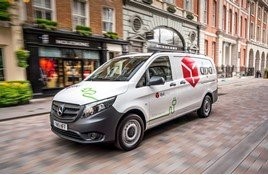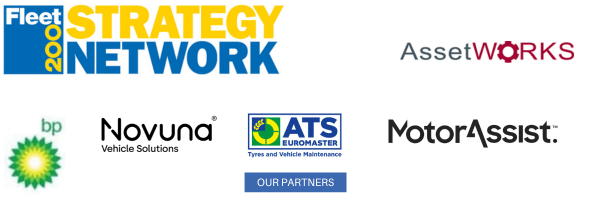The following article was published in the September 24 issue of Fleet News. Read the full article.
Royal Mail remains the largest private sector fleet in the Fleet200 and the overall largest fleet in the Fleet200 with 46,690 cars and vans (slightly down from 47,300 last year).
Collectively, the 102 private sector organisations which feature in this year’s Fleet200 operate 253,816 cars and vans, with an average fleet size of 2,488. It is not possible to make a direct comparison with last year’s survey as the make-up of the Fleet200 is not identical with 115 private sector organisations responding in 2019.
The impact of the Covid-19 pandemic is also not yet fully reflected in the responses. The Fleet200 survey was conducted between mid-March and June this year, before it was announced that the UK was in recession.
Private sector fleets have experienced mixed fortunes during the pandemic with postal and delivery fleets seeing high demand for their services due to the upturn in online shopping and sectors such as hospitality and travel experiencing a downturn.
DPD, the largest delivery firm in this year’s Fleet200 and the sixth largest private sector fleet with 6,280 cars and vans, has been handling parcel volumes more akin to the festive seasonal peak – its volumes during Easter were double that of the same period in 2019.
Despite shops reopening, DPD believes the upward trend will continue and is now preparing itself for what it predicts will be the busiest Black Friday/Cyber Monday (November 27/30) and Christmas period in its history.
It is recruiting 6,000 new staff, including 3,500 drivers, in time for Black Friday (November 27) and investing £200 million this year to expand its next-day parcel capacity, including £100m on vehicles, £60m on 15 new regional depots (10 more than originally planned in 2020) and the remainder on technology.
Similarly, smaller fleets, such as Well Pharmacy, which sits outside the top 10 private sector fleets with 639 cars and vans, has had to recruit extra delivery drivers and get them fully trained in a short space of time during the pandemic.
Average mileages
Private sector fleets in this year’s Fleet200 research already do average van mileage of 99,652 at replacement, with the average business mileage per annum 20,694 and some industry experts are concerned about the road safety implications if van mileages continue to increase and service, maintenance and repair (SMR) slips.
Royal Mail has been keeping on top of its SMR during the pandemic by making greater use of its fleet of mobile technicians, allowing it to provide more on-site service rather than the operator having to bring the vehicles back into the workshop.
Company car fleets and those fleets not defined as essential/key workers have experienced a different SMR challenge with vehicles parked up as a result of home working and with SMR being postponed while garages were closed.
One private sector respondent says their biggest challenge is “dealing with having 900 vehicles off the road and sorting getting them back working”.
The average car replacement cycle for private sector fleets in this year’s Fleet200 is 46 months, with average mileage of 80,604 and annual business mileage of 17,796. The latter is likely to drop significantly in next year’s survey if businesses decide to make home working permanent.
In that scenario, some employees may no longer do sufficient mileage to qualify for a company car or employees may decide they no longer want one.
Some private sector fleets that responded to this year’s Fleet200 research say they are looking at mobility solutions instead of company cars and some anticipate company car drivers will move to cash allowances.
Other concerns expressed by private sector fleets include vehicle supply, cost-cutting, the impact of Brexit and the Worldwide harmonised Light vehicle Test Procedure (WLTP).
Their chief concern, aside from the impact of Covid-19, is transitioning their fleet to electric, with several citing availability of electric vehicles (EVs) and charging infrastructure as their biggest challenge.
National Grid, the nineteenth largest private sector fleet this year with 2,828 vehicles, intends for its fleet to be zero emission by 2030, although fleet manager Lorna McAtear acknowledges that on the heavy commercial vehicle side it will be challenge, dependent on what comes to market.
National Grid, along with a number of other private sector fleets, are already operating pure electric light commercial vehicles such as the Nissan e-NV200.
DPD recently added 300 e-NV200s to its fleet, bringing its total EV tally to 450 by May.
It has achieved its aim of having 10% of vehicles at all of its 68 UK depots to be electric.
The vehicles are used for local, multi-drop deliveries, travelling up to 100 miles a day and employees have been trained on how to adapt to driving an EV, with vehicle handover sessions.
 DPD and Royal Mail are also among the 25 businesses trialling a prototype version of LEVC’s new range-extender electric van, the VN5, which goes on sale in November.
DPD and Royal Mail are also among the 25 businesses trialling a prototype version of LEVC’s new range-extender electric van, the VN5, which goes on sale in November.
A feature DPD finds particularly appealing is that the vehicle can switch automatically to electric-only on entering urban areas, including low emissions zones.
Both Royal Mail and Centrica (the third largest private sector fleet in this year’s Fleet200 with 11,200 vehicles), together with Uber, are involved in the world’s biggest electric commercial vehicle trial, Optimise Prime.
Collectively, they will be operating 3,000 EVs over the three-year project involving UK Power Networks and data business Hitachi Vantara, supported by Scottish and Southern Energy Networks and Hitachi Capital Vehicle Solutions.
The aim is to develop solutions to enable fleets to charge at home, depot or en route with least disruption.
On the company car side, more private sector fleet operators have moved beyond the EV trial stage. Scottish Power, number 39 of this year’s private sector fleets with 1,650 cars and vans, has the highest percentage of pure electric cars – they make up 16% of its fleet.
Amey Fleet Services is number 11 in the sector with 4,857 cars and vans. EVs account for 10%, as do plug-in hybrid (PHEV) and hybrid vehicles.
No longer diesel-only
Close Brothers, which sits at number 74 in the private sector this year with 640 cars and vans, has one of the highest rates of EV and hybrid adoption (5% pure EV, 60% PHEV and 10% hybrid). Head of fleet Steve Cuddy opened up the fuel policy from diesel-only three years ago as “the benefit-in-kind (BIK) was getting more expensive”.
He put in place strict policies as part of the agreement to allow plug-in hybrid vehicles on the fleet. Employees must sign a disclaimer when they order their vehicle that they will have a charger fitted at their home address at their expense and that they will charge the vehicle at home or at the office. They are not allowed to reclaim the electricity cost.
Employee uptake has been growing in line with company car tax incentives. This year’s 0% benefit-in-kind rate is encouraging more drivers to opt for EVs, fleet operators and leasing companies report.
That, in turn, is helping to lower fleet emissions.
The average CO2 emissions figure for company cars operated by private sector fleets is 109g/km while car orders are sub-100g/km (93g/km), which is marginally higher than the Fleet200’s 108g/km.
Close Brothers is already below that at 89g/km for its current fleet and an average of 47g/km for cars on order.
Nine other private sector fleets have also achieved average emissions below 100g/km, despite the challenges posed by WLTP.




















Login to comment
Comments
No comments have been made yet.